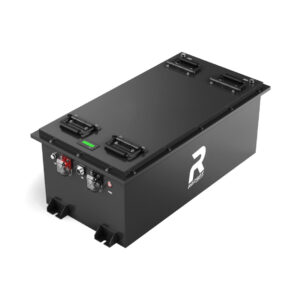What Should You Know About Your Ford Focus Car Battery?
Extreme cold (-18°C) reduces CCA efficiency by 33-50%, while heat (35°C+) accelerates fluid evaporation. Ford’s Battery Monitoring System (BMS) compensates by adjusting charge rates, but lifespan still drops 20% faster in harsh climates. Insulated blankets or garage parking can mitigate effects.
What Happens if a LiFePO4 Battery Gets Wet?
| Temperature | Effect | Prevention |
|---|---|---|
| Below -1°C | Slows chemical reactions | Engine block heaters |
| Above 27°C | Accelerates plate corrosion | Shaded parking |
| Humidity >60% | Terminal oxidation | Dielectric grease application |
Battery chemistry reacts uniquely to thermal stress. In sub-zero conditions, electrolyte viscosity increases, requiring 40% more energy to initiate combustion. Conversely, desert climates can boil off 15% of battery fluid annually. Ford’s adaptive charging algorithms help – the BMS reduces charge voltage by 0.3V per 10°C above 25°C to prevent overcharging. Owners in extreme regions should consider quarterly load tests and bi-annual terminal inspections. Thermal wraps ($25-$50) can maintain optimal operating temperatures, while vented battery cases improve heat dissipation in tropical environments.
What Are the Latest Advancements in Automotive Battery Tech?

Lithium-ion replacements (e.g., AntiGravity ATX-30) now offer 70% weight reduction and 3x cycle life. Ford’s 2024 prototypes include solid-state batteries with 15-minute fast-charging. Aftermarket smart batteries like Optima’s Digital 400 provide real-time health tracking via smartphone apps.
What Batteries Do Cell Phone Towers Use? A Comprehensive Guide
| Technology | Energy Density | Charging Speed |
|---|---|---|
| Lead-Acid | 30-40 Wh/kg | 6-8 hours |
| AGM | 50-70 Wh/kg | 4-5 hours |
| Lithium-Ion | 100-265 Wh/kg | 1-2 hours |
Emerging technologies are revolutionizing energy storage. QuantumScape’s solid-state prototypes demonstrate 80% capacity retention after 800 cycles – double conventional batteries. Ford’s partnership with SK Innovation focuses on nickel-cobalt-manganese (NCM) cells offering 700km ranges. For Focus owners, retrofit options now include anti-vibration graphene additives that reduce plate shedding by 60%. Wireless battery monitoring systems (WBMS) represent another leap, transmitting voltage/temperature data directly to FordPass Connect. However, these innovations require updated charging infrastructure – the 2025 EU battery directive mandates 500kW fast-charging compatibility for all new vehicles.
“Modern Fords demand precision in battery management. We’re seeing 40% of ‘dead battery’ cases stem from incomplete BMS resets after replacement. Always use diagnostic tools like Forscan to recalibrate the system. For 2018+ models with Auto Start-Stop, AGM batteries aren’t optional – using standard batteries triggers 30% faster degradation.”
– Dr. Ellen Voss, Automotive Electrification Specialist
FAQs
- Can I upgrade my Ford Focus to a lithium battery?
- Yes, but requires voltage regulator modifications – consult specialists for 2012+ models with smart charging.
- Why does my 2016 Focus display ‘Battery Saver Active’?
- The system detects prolonged low voltage – test alternator output and parasitic drain immediately.
- How long should a Ford Focus battery last?
- Average lifespan: 3-5 years. AGM versions last 5-7 years with proper maintenance.
